5th Generation Aircraft: Cutting-Edge Weapons, Stealth, and Air Superiority.
5th Generation Aircraft – Air-to-Air Dominance: Outmanoeuvring and Outthinking the Enemy (2025).

Air-to-air dominance in modern combat is no longer defined solely by speed and manoeuvrability but by the seamless integration of cutting-edge technology, superior tactics, and battlefield awareness in 5th generation aircraft.
Sixth-generation fighters will revolutionize aerial combat by combining unmatched agility with artificial intelligence-driven decision-making, enabling pilots to outmanoeuvre and outthink adversaries in the most complex scenarios.
These 5th generation aircraft aircraft will leverage real-time sensor fusion to track, classify, and prioritize threats across vast distances, often before the enemy is aware of their presence.
Hypersonic missiles and directed energy weapons provide unparalleled precision and lethality, while advanced AI systems will anticipate enemy manoeuvres, optimizing countermeasures and strike strategies with millisecond precision.
By acting as command nodes in a networked battlefield, these 5th generation aircraft fighters will coordinate with drones and allied platforms, orchestrating multi-axis attacks that overwhelm the enemy’s defences.
The fusion of pilot skill, machine intelligence, and technological supremacy ensures that these aircraft not only dominate in traditional dogfights but redefine the very nature of aerial combat, making them the ultimate force multipliers in the quest for air superiority.
5th Generation Aircraft – Beyond-Visual-Range Missiles (BVR) and Their Characteristics

Beyond-Visual-Range (BVR) missiles are advanced air-to-air weapons designed to engage and destroy enemy aircraft at distances far exceeding visual contact, typically over 20 miles (32 kilometres) and sometimes reaching hundreds of kilometres.
These missiles are characterized by their high-speed propulsion, often utilizing solid-fuel rocket motors or ramjets, and advanced guidance systems that include inertial navigation, mid-course data-link updates, and terminal active radar or infrared homing.
Key features of BVR missiles include their ability to engage targets in all weather conditions, high-altitude versatility, and countermeasure resistance through adaptive seekers and electronic warfare resilience.
Modern BVR missiles, like the AIM-120 AMRAAM or the Meteor, leverage long-range active radar seekers that allow the launching aircraft to disengage after firing, minimizing exposure to enemy threats.
Their high speed, often reaching Mach 4 or higher, and precision targeting capabilities make BVR missiles a cornerstone of air superiority, enabling pilots to neutralize threats before the adversary can retaliate or close the distance.
5th Generation Aircraft – Modern Air to air and Air to Surface Weapons.
Modern air combat is less about dogfights and more about detecting, targeting, and destroying opponents before they even know you’re there. This is where BVR missiles, like the AIM-120D AMRAAM, come in.

- Range and Precision:
The AIM-120D has a range exceeding 100 miles, allowing stealth aircraft like the F-22 or F-35 to stay invisible while taking out targets from afar. Its guidance systems are networked, meaning mid-course updates can be fed from other platforms, like AWACS or even satellites. - No Escape Zone (NEZ):
These missiles are designed to ensure once they’re fired, there’s virtually no chance of escape manoeuvring and countermeasures only delay the inevitable.

Meteor Missile
The Meteor missile is a cutting-edge, air-to-air weapon system designed to provide superior long-range capabilities and precision targeting. Developed by MBDA, it represents a significant leap forward in missile technology, offering advanced features such as active radar guidance, superior aerodynamic design, and a highly extended range.
It far outstrips older missiles considerably compared to older missile systems currently in service. With a range of well over 100 kilometres (Classified), the Meteor can engage targets beyond visual range (BVR), allowing fighter aircraft to strike adversaries from a safe distance.
This allows it to strike while maintaining stealth and operational flexibility. Its ability to adjust course during flight ensures that it can effectively track and destroy fast-moving targets, including highly manoeuvrable aircraft, even in complex electronic warfare environments.
As a key component of modern air forces, the Meteor enhances air superiority and mission success for its users, cementing its position as one of the most advanced air-to-air missiles in the world.
R-77 ADDER
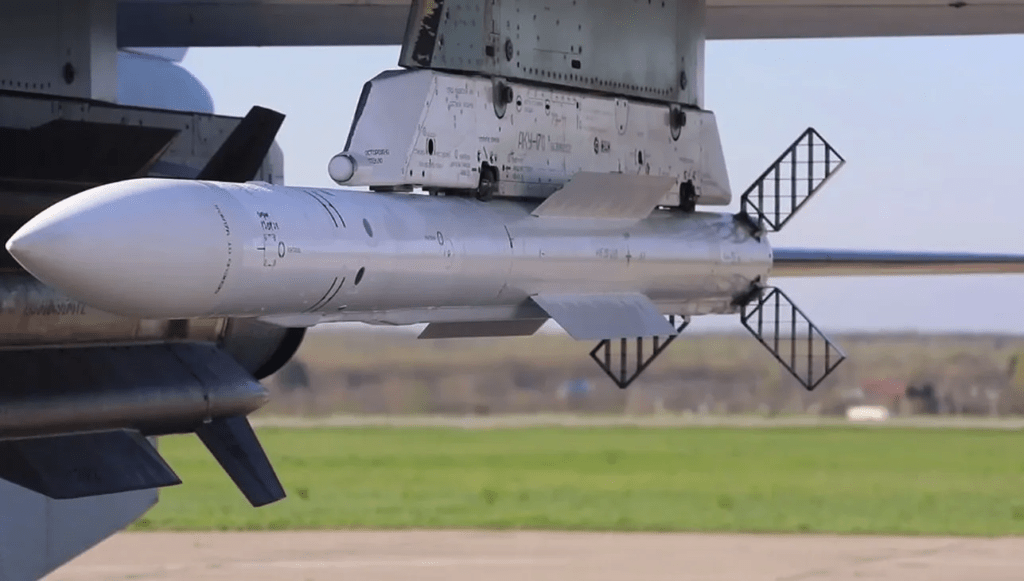
The R-77 missile, often referred to as the “AA-12 Adder” by NATO, is a highly advanced, medium-range, active radar-guided air-to-air missile developed by Russia in the 1990s.
Designed to engage enemy aircraft at both beyond visual range (BVR) and within visual range (WVR), the R-77 is comparable to Western missiles like the AIM-120 AMRAAM.
It features a sophisticated radar seeker that allows it to autonomously track and target fast-moving adversaries, even in complex electronic warfare environments.
The missile’s active radar guidance, combined with a large warhead and high manoeuvrability, enables it to accurately hit manoeuvring targets at ranges of up to 100 kilometres. The R-77’s design also includes a high level of resistance to countermeasures, making it highly effective in modern aerial combat scenarios. Since its introduction, the R-77 has been integrated into a variety of Russian and export aircraft, significantly enhancing the air combat capabilities of the nations that employ it.
Its ability to engage both highly manoeuvrable and distant targets has made it a cornerstone of Russia’s air superiority strategy.
5th Generation Aircraft – High-Off-Boresight Missiles (HOBS)


Sometimes, though, dogfights do happen. In close-range combat, high-off-boresight missiles like the AIM-9X Sidewinder shine along with the Israeli Python missile which truth be known has been the best high off boresight missile available for years.
The Python has been able to be launched at aircraft behind the defending aircraft by use of the helmet mounted sight. Truly incredible. This is something the AIM-9X is said to be able to do but the Python could do it first as far as I’m aware.
- These missiles can be cued by the Helmet-Mounted Cueing System (HMCS), allowing a pilot to lock onto an enemy just by looking at them—yes, it’s as cool as it sounds.
- Features like thrust vectoring make them extremely agile, capable of turning sharply to pursue targets even at odd angles.
- The ability to strike aircraft behind the defensive target is talked about. Incredible!
R-73 ARCHER

The R-73 missile, developed by the Soviet Union in the 1980s, is a highly effective short-range, infrared-guided air-to-air missile known for its exceptional agility and performance in close combat.
Designed to counter enemy aircraft in dogfights and constantly being updated to keep up with competitors.
The R-73 features a highly advanced infrared homing seeker, enabling it to engage targets with high precision, even in very wide off-boresight situations. This means the missile can lock onto targets that are not directly in front of the launching aircraft, providing a significant advantage in close-quarters combat.
The missile’s remarkable manoeuvrability is due to its thrust vector control system, allowing it to execute sharp turns and follow highly evasive targets. Initially introduced into service with the Soviet Air Force in the early 1980s, the R-73 quickly became a vital weapon for various air forces around the world.
It was ground breaking at the time and its design influencing later air-to-air missile systems. Interesting to note that some Russian Technology influenced western technology for a change.
It has been widely adopted by numerous countries and continues to be an essential part of many modern fighter aircraft arsenals, proving its enduring relevance on the battlefield despite newer developments in missile technology.
5th Generation Aircraft – Stealth-Compatible Weapons
Since 5th-gen fighters rely heavily on stealth, weapons must also be internally stored to avoid compromising their low radar cross-section (RCS). This means advanced missiles are designed for compact, internal carriage without sacrificing range or firepower.
The list of actual stealth missiles is pretty classified so here we can only surmise to how stealthy a missile would be. In the Air to Air regime its been more about speed and range with missiles like the Typhoons Meteor missile having a ramjet giving it amazing range which could be well over 200 KLM.

Meteor Missile
Meteor is an advanced radar-guided, beyond-visual-range air-to-air missile (BVRAAM) that is superior to other missiles of its type. The Meteor is a European active radar guided beyond-visual-range air-to-air missile (BVRAAM) developed and manufactured by MBDA.
It offers a multi-shot capability (multiple launches against multiple targets), and has the ability to engage highly manoeuvrable targets such as jet aircraft, and small targets such as UAVs and cruise missiles in a heavy electronic countermeasures (ECM) environment with a range far in excess of 200 kilometres (110 nm.)
5th Generation Aircraft – Air-to-Surface Supremacy: Precision from the Shadows
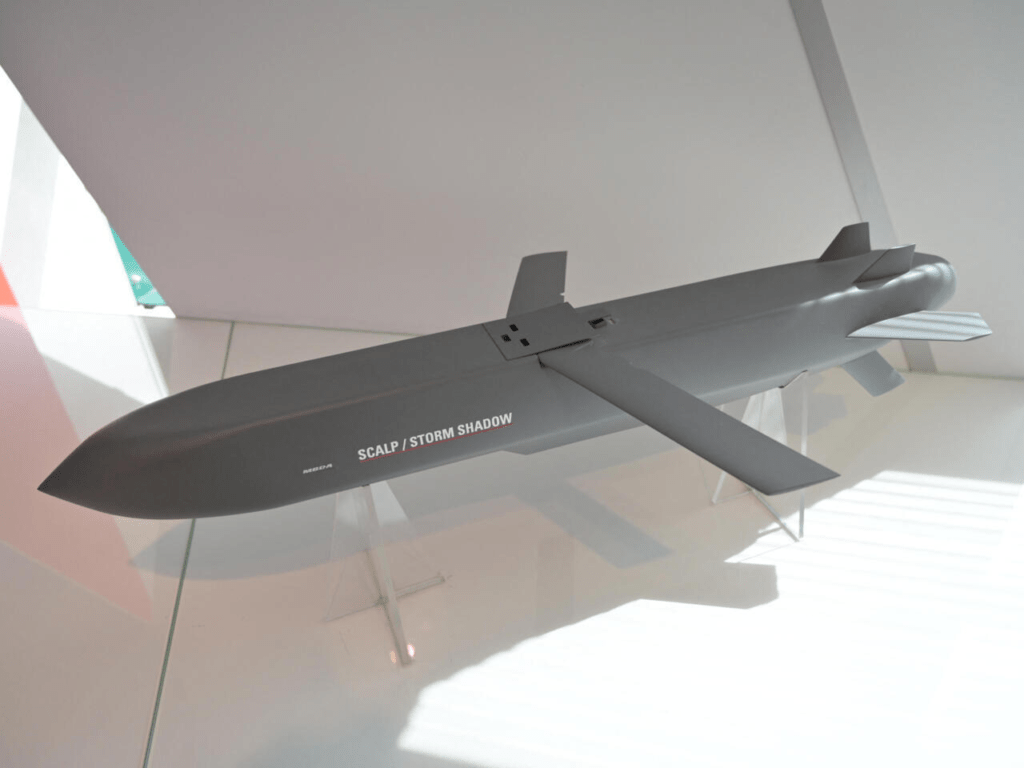
The list of weapons below is as complete as the internet can provide. There are some amazingly potent missiles with many said to have some stealth qualities along with amazing ranges and scary accuracy. These are from around the world so dive in and have a glance at what’s unclassified and currently available.
Storm Shadow
The missile, known as a bunker buster, has a range above 155 miles and has been supplied to Ukraine by the UK since 2023. The 1,300kg missile travels at speeds of more than 600mph and is powered by a turbo-jet engine.
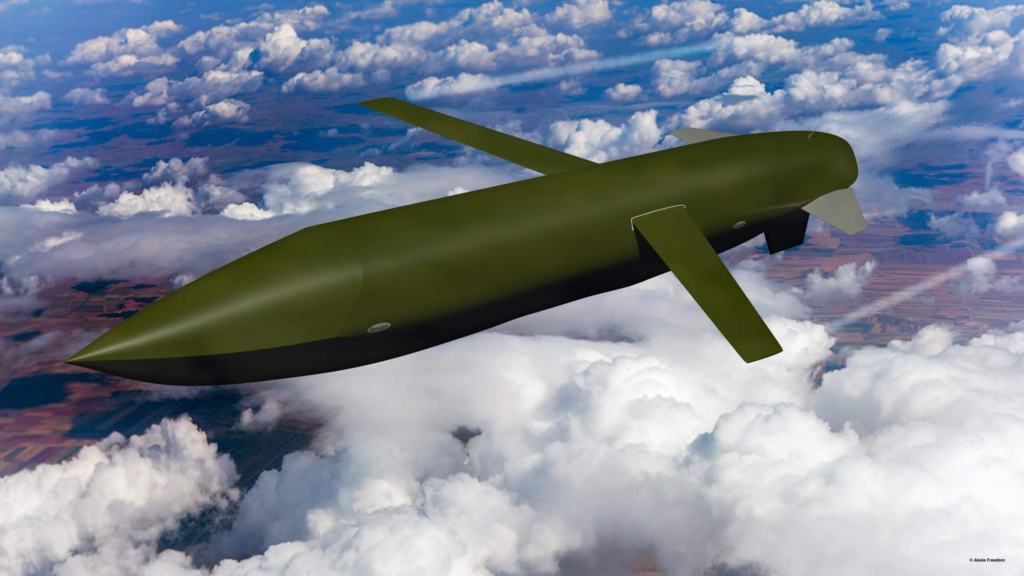
The AGM-129 ACM (Advanced Cruise Missile)
The AGM-129 ACM (Advanced Cruise Missile) was a low-observable, subsonic, turbofan-powered, air-launched cruise missile originally designed and built by General Dynamics and eventually acquired by Raytheon Missile Systems. Prior to its withdrawal from service in 2012, the AGM-129A was carried exclusively by the US Air Force‘s B-52H Stratofortress bombers.
AGM-158 Joint Air-to-Surface Standoff Missile (AGM-158 JASSM)
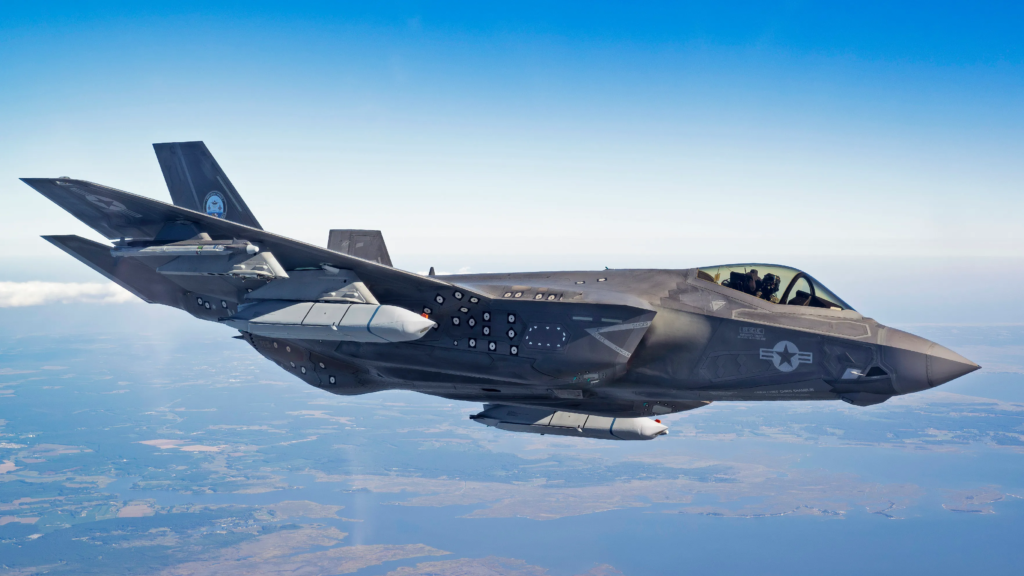
The AGM-158 Joint Air-to-Surface Standoff Missile (AGM-158 JASSM) is a low detection standoff air-launched cruise missile developed by Lockheed Martin for the United States Armed Forces.[7] It is a large, stealthy long-range weapon with a 1,000-pound (450 kg) armour piercing warhead.
AGM-158C LRASM (Long Range Anti-Ship Missile)
The AGM-158C LRASM (Long Range Anti-Ship Missile) is a stealth air launch anti-ship cruise missile developed for the United States Air Force and United States Navy.
Unlike current anti-ship missiles, the LRASM is expected to be capable of conducting autonomous targeting, relying on on-board targeting systems to independently acquire the target without the presence of prior, precision intelligence, or supporting services like Global Positioning Satellite navigation and data-links.
GM-181 Long Range Standoff Weapon (LRSO)

The AGM-181 Long Range Standoff Weapon (LRSO) is a nuclear-armed air-launched cruise missile under development by Raytheon Technologies that will replace the AGM-86 ALCM.
JDAMs and GPS-Guided Bombs
Weapons like the Joint Direct Attack Munition (JDAM) have become staples for precision strikes.
- These bombs are converted “dumb bombs” with GPS guidance kits, allowing pinpoint strikes on ground targets.
- 5th-gen aircraft use sensors and advanced targeting pods to designate targets far beyond the reach of earlier aircraft.
Small Diameter Bomb (SDB)
The GBU-39 SDB is a miniaturized precision bomb with stealth-friendly dimensions that allows aircraft to carry more payload internally.
- They are perfect for high-value, low-collateral damage strikes, making them ideal in urban environments or near friendly forces.
- With extended ranges (up to 50 miles), they keep the aircraft safely away from enemy defences.
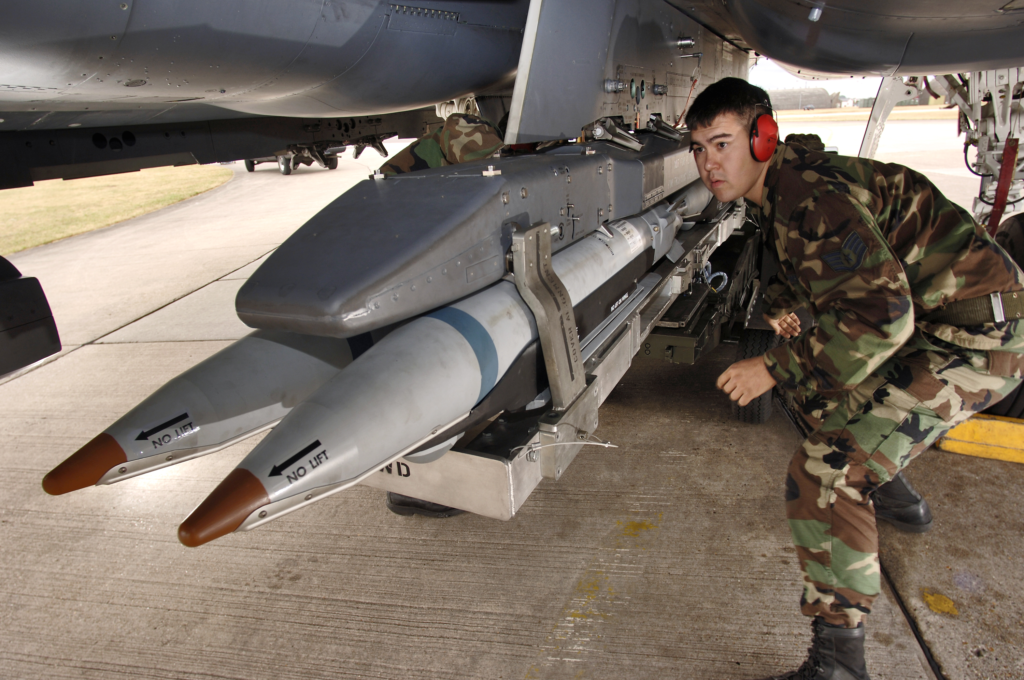
Hypersonic Weapons
While still in development, hypersonic missiles represent a significant leap. These weapons travel at speeds over Mach 5, giving enemies almost no time to react.
- Fifth-gen platforms like the F-35 are expected to integrate these weapons as they become operational, expanding their ability to strike critical targets anywhere on the battlefield.
The Hypersonic Attack Cruise Missile (HACM) is a scramjet-powered hypersonic air-launched cruise missile project, the successor of the Hypersonic Air-breathing Weapon Concept (HAWC) and the SCIFiRE hypersonic programs. This project is believed to be in development with a range of over 1000 nm it surely is a potent weapon.
5th Generation Aircraft – Electronic Warfare and Multi-Role Adaptability
Electronic Warfare and Multi-Role Adaptability in 5th Generation Aircraft:
Electronic Warfare (EW): Fifth-generation fighters like the F-35 Lightning II and the F-22 Raptor are equipped with advanced electronic warfare systems that redefine the role of stealth aircraft in modern combat. EW systems onboard these aircraft go beyond traditional radar and missile defence, acting as active participants in disrupting, deceiving, and dominating the electromagnetic spectrum.
Key capabilities include active radar jamming, electromagnetic pulse (EMP) resilience, signal intelligence (SIGINT), and cyber warfare integration. For example, the F-35’s AN/ASQ-239 Barracuda EW suite can detect and identify threats from air-to-air and surface-to-air systems, providing pilots with real-time situational awareness and the ability to suppress enemy radar and communication networks without engaging directly.

Additionally, the integration of Distributed Aperture Systems (DAS) allows these fighters to track and jam incoming threats, such as enemy missiles, while maintaining a low radar cross-section (RCS).
These EW systems, designed for offensive and defensive operations, enable fighters to penetrate heavily contested airspace, neutralize air defence systems, and disrupt enemy communications without revealing their position enhancing survivability and mission effectiveness.
Multi-Role Adaptability: Unlike earlier generations, which often specialized in air superiority, ground attack, or reconnaissance, fifth-generation fighters are inherently designed to excel in multi-role missions. This adaptability is driven by the integration of sensor fusion and modular mission systems.
For example, the F-35 can seamlessly switch between air-to-air combat, close air support, and intelligence-gathering during a single mission. Its advanced avionics system merges data from multiple onboard and offboard sources such as radar, infrared, and EW systems into a single, coherent display for the pilot, dramatically reducing cognitive load and increasing operational flexibility.
Publicly known examples include the ability of these aircraft to operate as command-and-control hubs for network-centric warfare. The F-35’s data-link capabilities allow it to act as a “quarterback,” coordinating other aircraft, drones, and even naval and ground assets by sharing real-time tactical information.
This interoperability ensures that fifth-generation fighters are not only effective on their own but also force multipliers in a broader combat network. As conflicts increasingly demand rapid adaptability to dynamic threats, this multi-role versatility positions fifth-generation fighters at the forefront of modern military strategy.
The Drone Connection: Loyal Wingman or 6th-Generation Technology?
The integration of unmanned systems, particularly in the form of Loyal Wingman drones, is a transformative aspect of modern air combat. These drones represent a bridge between fifth-generation fighters and the emerging technologies that will define sixth-generation platforms.
While Loyal Wingman concepts are still in development, their operational potential is becoming increasingly evident, with countries like the United States, Australia, and the United Kingdom pioneering such programs.

Loyal Wingman Concept: The Loyal Wingman is an unmanned combat aerial vehicle (UCAV) designed to work in concert with piloted fighters, serving as a force multiplier.
These drones can perform a variety of roles, including reconnaissance, electronic warfare, target designation, and even strike missions, reducing the risk to human pilots.
Controlled either autonomously or semi-autonomously, Loyal Wingman systems leverage artificial intelligence (AI) to interpret commands, adapt to dynamic mission conditions, and operate cohesively within a network of manned and unmanned assets.
For example, the Boeing-developed MQ-28 Ghost Bat, part of Australia’s Loyal Wingman program, has demonstrated its ability to accompany manned aircraft and independently perform tasks such as surveillance and enemy radar jamming.
These drones extend the reach and effectiveness of fifth-generation fighters by acting as sensor nodes, extending radar and infrared coverage, and providing additional firepower without risking human lives.
In contested airspace, a Loyal Wingman could be deployed ahead of manned aircraft, drawing enemy fire and revealing hidden threats, thereby preserving the stealth and combat readiness of the piloted platforms.
Connection to Sixth-Generation Fighters: The Loyal Wingman initiative is seen as a precursor to sixth-generation technologies, where manned and unmanned systems will work even more seamlessly in swarms. Sixth-generation fighters are expected to serve as command hubs in a distributed network of autonomous and semi-autonomous drones.

This concept aligns with the “system of systems” approach, where the fighter itself may not need to engage directly in combat but can orchestrate multiple drones for reconnaissance, suppression of enemy defences, or precision strikes. Advanced AI and machine learning algorithms will enable these drones to make real-time decisions, adapt to evolving threats, and even operate independently when communication with the mothership is disrupted.
Furthermore, sixth-generation fighters will likely feature enhanced data-link capabilities and quantum encryption, ensuring secure and instantaneous communication between manned and unmanned systems.
Stealth technology will also evolve, enabling both drones and fighters to evade detection more effectively while sharing sensor and targeting data.
These developments are designed to ensure air superiority in environments dominated by advanced anti-access/area denial (A2/AD) systems.
In summary, the Loyal Wingman concept represents the initial steps toward integrating drones into manned combat operations. While still tethered to fifth-generation platforms, these systems embody the key principles of sixth-generation warfare autonomy, network-centricity, and multi-domain adaptability.
As technology advances, this partnership between manned and unmanned systems will redefine air combat, blending human ingenuity with machine precision to dominate the battlespace.
What Sets 6th-Generation Fighters Apart from 5th and Earlier Generations

Sixth-generation fighters mark a revolutionary leap in air combat capability, distinguished by advanced technologies that redefine the role and effectiveness of military aviation.
While previous generations of fighter jets focused on incremental improvements in speed, manoeuvrability, stealth, and weapons systems, sixth-generation platforms aim to dominate highly contested and technology-driven battlefields by embracing cutting-edge innovations in connectivity, autonomy, and survivability.
1. Network-Centric Warfare and Multi-Domain Integration
One of the most defining features of sixth-generation fighters is their role as command hubs in a larger system of systems. Unlike fifth-generation jets like the F-35, which introduced sensor fusion and data-sharing capabilities, sixth-gen platforms will take connectivity to the next level.
These jets will operate as part of a highly integrated network of drones, satellites, ground forces, and naval assets.
- Data-Centric Operations: Equipped with advanced data links, artificial intelligence (AI), and quantum encryption, sixth-gen fighters will act as real-time information brokers, receiving, processing, and disseminating tactical data across multiple domains. This capability enhances situational awareness and coordination across air, land, sea, space, and cyber environments.
- Swarm Integration: These aircraft will command swarms of drones (like Loyal Wingman systems), performing roles such as reconnaissance, electronic warfare, and precision strikes. The seamless integration of manned and unmanned assets represents a shift from traditional aircraft-focused warfare to distributed, network-centric combat.

2. Enhanced Stealth and Survivability
While stealth was a defining feature of fifth-generation aircraft, sixth-generation fighters are expected to evolve stealth capabilities to address emerging detection technologies.
- Multispectral Stealth: Advanced stealth materials and designs will minimize detection not only in radar wavelengths but also across infrared, acoustic, visual, and electromagnetic spectra. This is critical for evading increasingly sophisticated multi-sensor detection systems.
- Active Camouflage and Signature Management: Some concepts propose the use of active camouflage, where aircraft can dynamically alter their appearance to blend with the environment or mimic other objects. Advanced electronic warfare systems will also allow the jet to manipulate or spoof enemy radar signals, creating false targets or making the aircraft “invisible.”
- Survivability Through Autonomy: Autonomy will enhance survivability by enabling aircraft to operate in “dark mode” with minimal emissions or even continue missions independently if communication is disrupted. In hostile environments, this ensures mission objectives are met even under electronic jamming or anti-access/area denial (A2/AD) conditions.
3. Artificial Intelligence and Automation

AI will be central to sixth-generation fighter operations, reducing pilot workload and enabling capabilities far beyond human reaction times.
- Autonomous Decision-Making: AI will allow sixth-gen fighters to analyse vast amounts of data in real-time, identify threats, and propose or execute tactics without pilot intervention. This capability is critical in high-speed engagements where milliseconds can determine outcomes.
- Collaborative Combat AI: These jets will feature collaborative AI that enables manned aircraft to work in tandem with unmanned systems, coordinating attacks, adapting to threats, and optimizing mission performance dynamically.
4. Directed Energy Weapons (DEWs)

Sixth-generation fighters are expected to integrate directed energy weapons such as high-energy lasers or microwave systems. These weapons offer unique advantages over traditional munitions:
- High Precision and Infinite Ammo: Directed energy weapons provide precise, instantaneous strikes on targets like incoming missiles, drones, or electronic systems without relying on finite stores of missiles or bullets.
- Anti-Electronic Warfare: Microwave weapons can disable enemy electronics, disrupting communications, sensors, or guidance systems, making them highly effective in electronic warfare scenarios.
5. Hypersonic and Advanced Kinetic Weaponry
While fifth-generation fighters introduced enhanced missile systems, sixth-gen platforms will push the envelope with hypersonic and adaptive kinetic weapons.
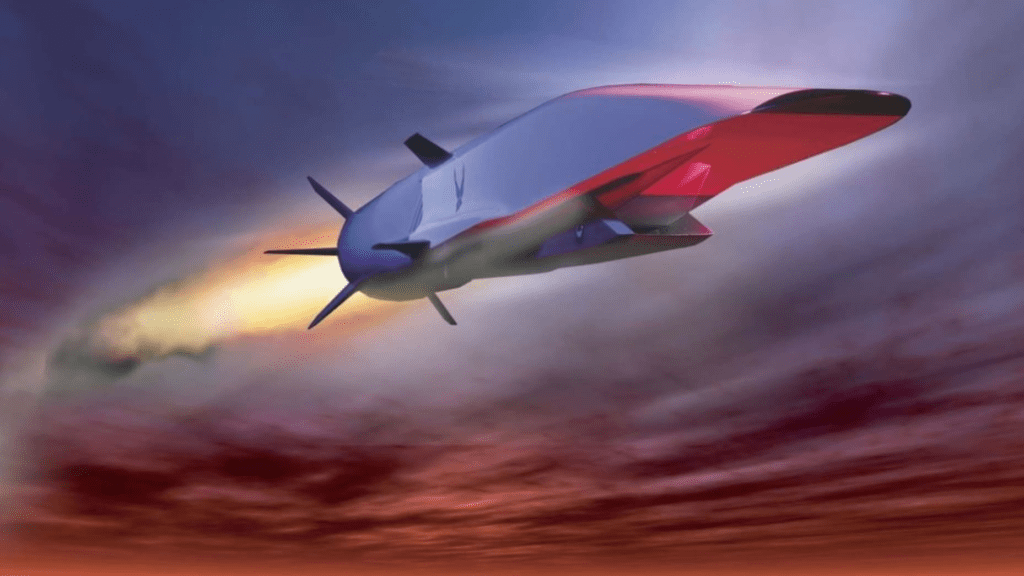
- Hypersonic Missiles: With speeds exceeding Mach 5, hypersonic weapons reduce engagement times and are harder to intercept, enabling rapid strikes against high-value targets.
- Modular Weapon Systems: Future fighters will incorporate adaptable weapon systems capable of reconfiguring for various missions, further enhancing multi-role flexibility.
6. Superior Performance and Agility
Although raw performance has taken a backseat to systems integration in recent generations, sixth-generation fighters are expected to feature enhanced flight capabilities to maintain superiority.
- Variable-Cycle Engines: These advanced engines will provide higher thrust, better fuel efficiency, and greater range. Some concepts suggest hybrid propulsion systems for improved performance across all flight regimes.
- Supermanoeuvrability: Sixth-gen fighters will incorporate next-generation flight control systems and airframe designs to achieve unmatched agility, even in contested airspace. This ensures an edge in both dogfights and evasive manoeuvres.
7. Adaptation to Emerging Threats
Emerging threats like hypersonic weapons, advanced surface-to-air missile (SAM) systems, and cyber attacks are reshaping air combat strategies. Sixth-generation fighters will be designed to counter these challenges.

- Hypersonic Defence: Advanced sensors and AI-enabled response systems will enable detection and interception of hypersonic threats in real-time.
- Cybersecurity and Resilience: With integrated AI and network-centric operations, these fighters will feature hardened cybersecurity measures to defend against hacking or electronic disruption.
Summary: A Paradigm Shift in Air Combat

Sixth-generation fighters represent a departure from traditional aircraft development by emphasizing connectivity, autonomy, and adaptability.
While fifth-generation platforms like the F-35 and F-22 excel in stealth and sensor fusion, sixth-gen jets will redefine dominance by acting as central nodes in a multi-domain battlespace.
They will be capable of commanding fleets of unmanned systems, deploying revolutionary weapons, and leveraging AI to outthink and outmanoeuvre adversaries.
These advancements not only ensure operational superiority but also address the evolving threats of the 21st-century battlefield.
5th Generation Aircraft – A Light-hearted Take: All Guns, No Roses?
Let’s face it: 5th-gen fighters are the Swiss Army knives of the skies. They do everything and they do it well. But as we marvel at their weapons and systems, one thing becomes clear: the days of sticking flowers in a gun barrel are long gone. Instead, we’re in the era of flying computers armed to the teeth with missiles that think for themselves.
The question is no longer whether these weapons are lethal it’s how long you’ll last if you’re on the wrong side of them. (Spoiler: not long.)
So, whether you’re dogfighting at Mach 2 or precision-striking a target from 50 miles away, remember: 5th-gen aircraft are rewriting the rules of war, one missile at a time. And drones? They’re just getting warmed up.
🔹 FAQ Section
On-Page FAQ
Q1: What makes 5th-generation aircraft different from previous fighters?
5th-generation fighters combine stealth, sensor fusion, networked operations, and advanced weapons systems to achieve air dominance.
Q2: What are Beyond-Visual-Range (BVR) missiles?
BVR missiles engage targets at long distances using radar or infrared guidance, often allowing the launching aircraft to remain undetected.
Q3: How do High-Off-Boresight Missiles (HOBS) work?
HOBS missiles, like the AIM-9X or Python, can be launched at targets outside the aircraft’s forward arc, often cued via a helmet-mounted display.
Q4: What is the Loyal Wingman concept?
Unmanned drones that operate with manned fighters to extend surveillance, electronic warfare, and strike capabilities, acting as force multipliers.
Q5: How are 5th-gen fighters adapting to future threats?
Through AI-assisted decision-making, multi-domain operations, stealth-compatible weapons, hypersonic integration, and electronic warfare resilience.
Author

Brendon McAliece (Aka Gunnie) is a military veteran with 23 years working on Jet Fighters, their weapons systems and ejection seat/module systems as well as munitions and R&D. Involved with flight simulation since the 1980s, he has flown all the major flight simulators over the years.
He is an Australian expat who has lived in Malaysia, UK, Saudi Arabia and more recently Thailand. He is a multi-lingual blogger who loves to share his life experiences here on LetsFlyVFR.com and DreamingGuitar.com, with his lifestyle and Travel experiences Blog plus his Dreaming Coffee website.
Learn More @
DreamingGuitar.com – DreamingCoffee.com – LetsFlyVFR.com
( HOME – BLOG – SHOP – ABOUT )
This page has been viewed 1 time.
As an Amazon affiliate I may benefit from qualifying sales.

4 responses to “5th Generation Aircraft: Cutting-Edge Weapons, Stealth, and Air Superiority.”